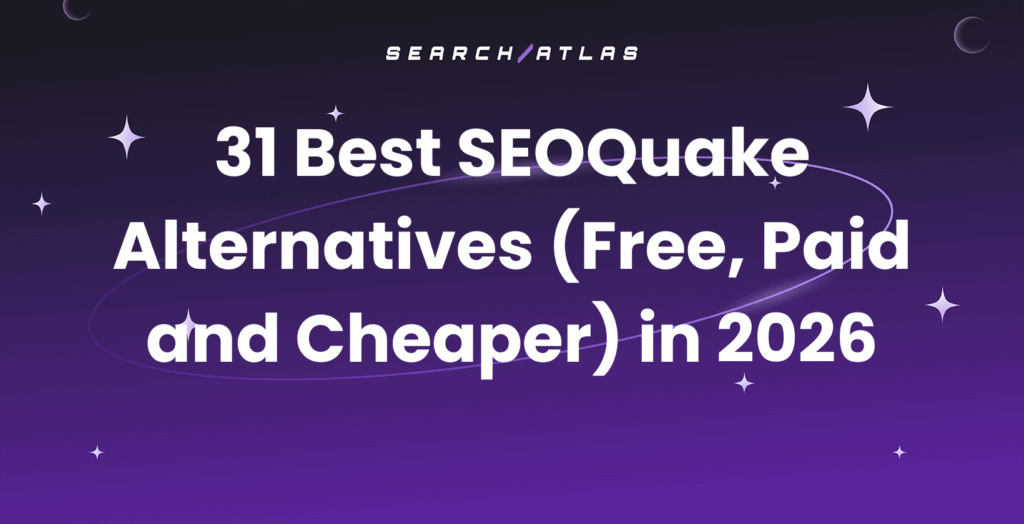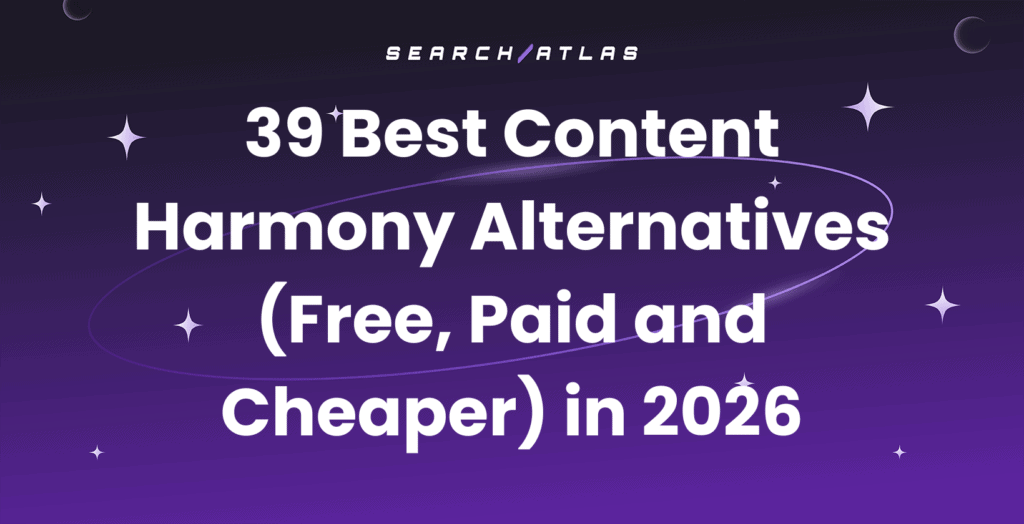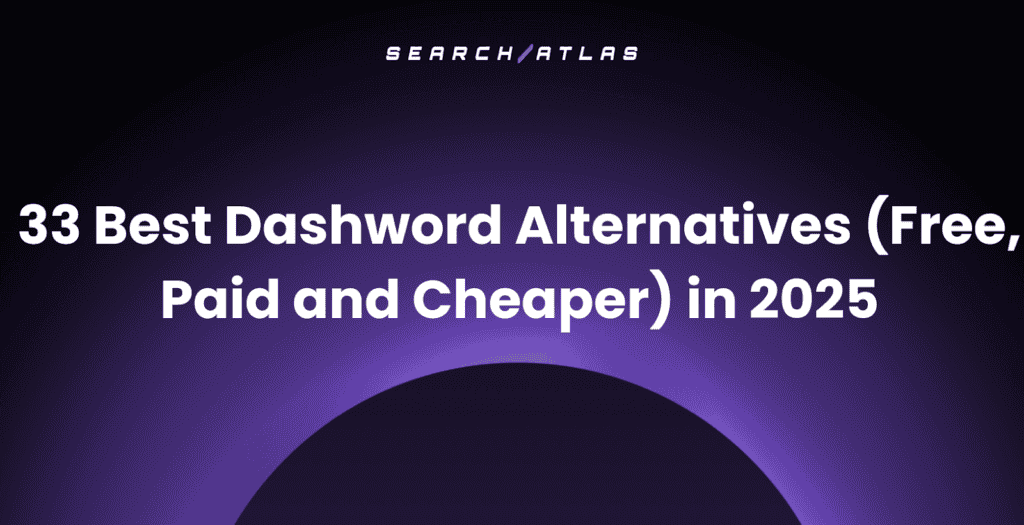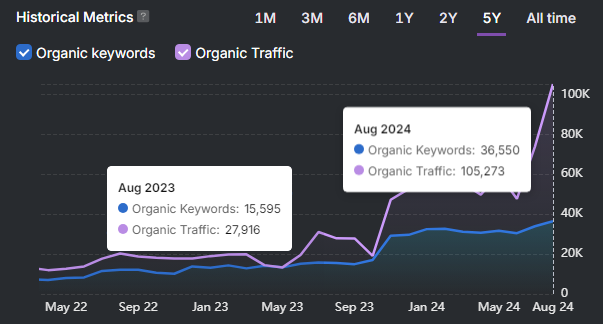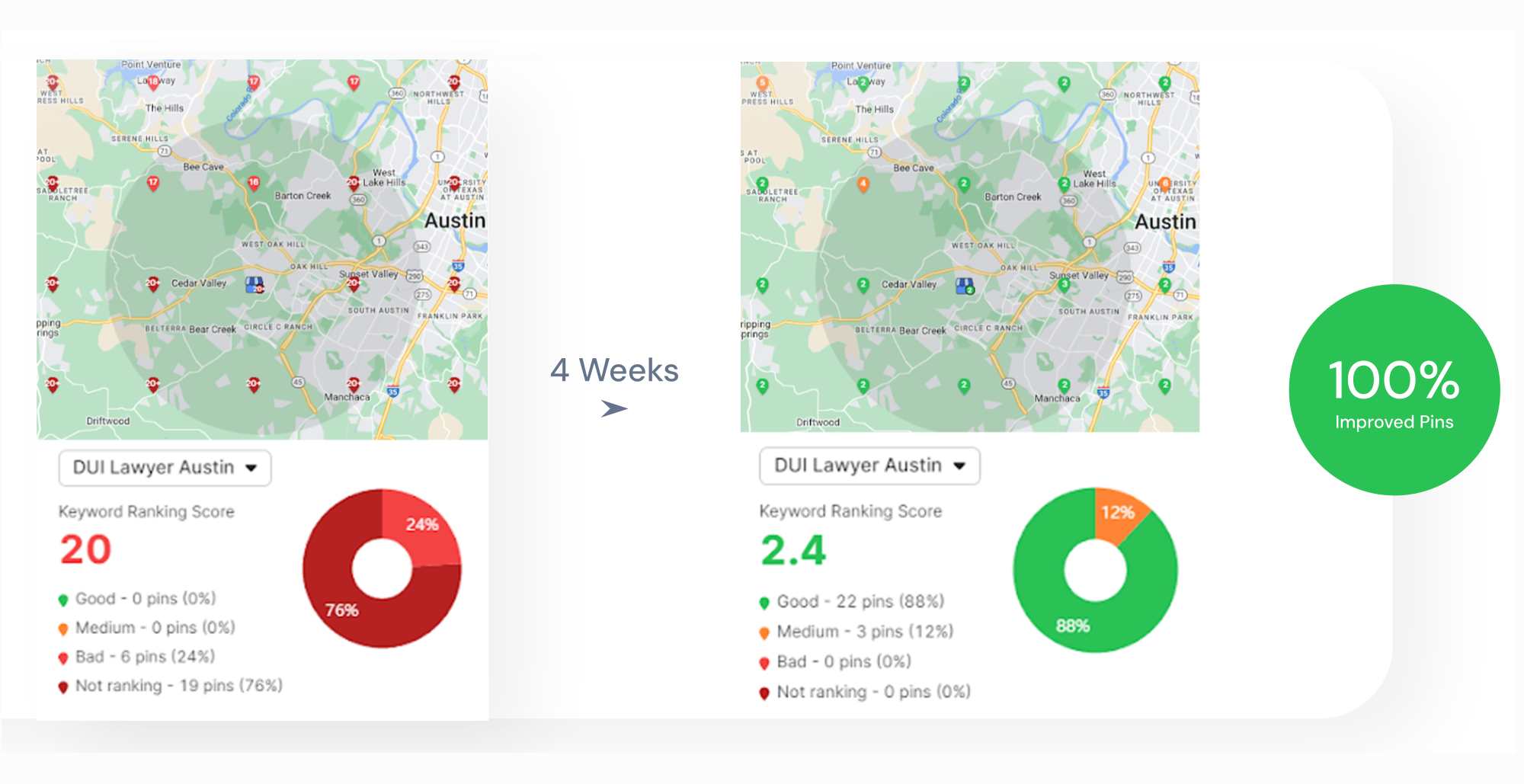Wondering how SEO vs. SEM vs. SMO shape digital performance in 2025? Each follows a unique approach, yet they often target similar goals. 🎯
Without clear coordination, efforts become fragmented, leading to missed traffic, wasted budget, and low return on investment. Understanding their differences helps you allocate resources effectively, focus on what matters most in each channel, and create purposeful content.
Up ahead, you’ll find a breakdown of how each approach works, where it delivers the most value in 2025. Then, we’ll introduce a solution that helps manage SEO, SEM, and SMO together for better efficiency and results.
What Is SEO?
Search Engine Optimization (SEO) refers to a digital marketing method that improves how websites appear in unpaid search engine listings. The process helps websites align with search engine ranking factors to increase their appearance for relevant queries.

What Are the Popular SEO Strategies?
The most common SEO strategies involve optimizing keywords, publishing relevant content, refining on-page elements, building backlinks, and enhancing technical performance. Each strategy addresses a specific ranking factor, which helps search engines evaluate site relevance, authority, and usability during indexing.
What Are the Benefits of SEO?
SEO delivers a range of benefits that improve visibility and drive long-term growth. Some examples appear below.
- Builds brand visibility. Business gains repeated exposure online, which makes it more recognizable to its target audience.
- Improves lead quality: Content matches user intent, which leads visitors to take valuable actions with higher conversion potential.
- Reduces long-term costs. Results continue over time to minimize reliance on short-term paid campaigns.
- Increases organic traffic. Website gains visibility in unpaid search results, which draws consistent visitors actively searching for related topics.
- Improve UX. The site becomes easier to navigate, more relevant, and faster, which encourages users to stay longer and return.
When Businesses Should Invest in SEO?
Businesses invest in SEO when they aim to increase organic visibility, strengthen credibility, and compete effectively in digital search landscapes. SEO becomes essential once a company wants to reduce dependency on paid media and attract long-term, high-intent traffic.
What Is SEM?
Search Engine Marketing (SEM) is a digital strategy focused on increasing online visibility through paid search placements. The most common format is pay-per-click (PPC) advertising, where businesses bid on keywords to display sponsored listings at the top of results pages.
What Are the Popular SEM Strategies?
Common SEM strategies focus on managing PPC campaigns that drive qualified traffic through search engines. These strategies include selecting relevant keywords, writing attention-grabbing ad text, and designing landing pages that encourage conversions.
Advertisers adjust bids to balance cost and performance, segment audiences for better targeting, and use ad extensions to provide extra information. Regular performance reviews, split testing, and conversion tracking help refine campaigns and increase return on investment.
What Are the Benefits of SEM?
Search Engine Marketing offers a direct way to increase visibility, attract high-intent users, and drive immediate results through paid search.
- Expands brand reach. Search ads place the business in front of users during relevant searches, which increases brand exposure.
- Drives immediate conversions. Paid campaigns start generating clicks and potential sales shortly after launch, which speeds up revenue flow.
- Adjusts to demand levels. Advertisers scale campaigns based on performance or budget changes, which makes growth more manageable.
- Secures top ad positions. Paid listings appear above organic results, which helps outperform competitors in crowded search spaces.
- Connects with intent-driven users. Ads target people actively searching for related terms, which increases the chance of attracting qualified traffic.
When Businesses Should Invest in SEM?
SEM offers precise audience targeting and rapid placement in search results for businesses that need immediate visibility, fast traffic, and measurable impact from advertising efforts. It proves valuable during product launches, time-sensitive campaigns, or situations requiring urgent market attention.
What is SMO?
Social Media Optimization (SMO) is the strategy of enhancing your brand presence and visibility through social platforms. It connects SEO with social engagement, focusing on how well content performs across networks like Facebook, Instagram, LinkedIn and YouTube.
What Are the Popular SMO Strategies?
SMO strategies aim to improve visibility and engagement across social media platforms. These strategies include optimizing profile details with branded visuals and keywords, sharing content that encourages interaction, and using hashtags to expand reach. The focus is to maintain consistent content quality, conduct regular performance reviews, and integrate social sharing features on websites to strengthen overall social media presence.
What Are the Benefits of SMO?
SMO helps businesses maximize the impact of their social presence by improving visibility, engagement, and performance.
- Expands brand reach. Maintain active, optimized profiles to appear consistently in users feeds and search results.
- Encourages user interaction. Share relevant content and engage with comments to build strong audience relationships.
- Reveals audience insights. Monitor reactions and feedback to understand preferences, expectations, and behavior.
- Improves digital positioning. Establish consistent messaging across platforms to reinforce brand recognition and credibility.
- Builds public trust. Handle communication openly and respond promptly to enhance public perception.
- Drives business results. Attract qualified traffic and generate leads that contribute to increased revenue.
When Businesses Should Invest in SMO?
Businesses invest in SMO when they need to build brand trust, grow an engaged audience, or increase visibility across social platforms. It’s especially useful when customers rely on social media to discover brands, compare options, and form buying decisions.
SEO vs. SEM vs. SMO: What Sets Each Strategy Apart?
SEO, SEM, and SMO shape how brands show up, perform, and connect across digital spaces. Here is how each approach separates long-term organic growth, paid search targeting, and social media reach.
1. Audience Intent
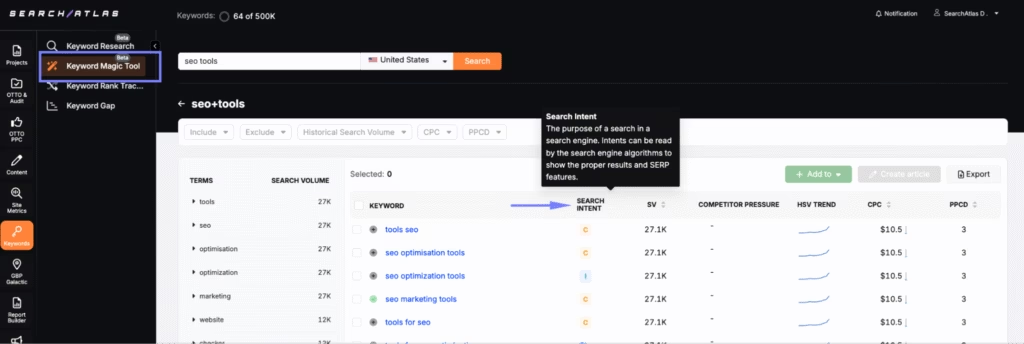
SEO attracts users who actively search for information, products, or services through unpaid search engine queries. These users prioritize relevance, expertise, and content quality over immediate availability. SEO mainly serves users with informational or consideration-stage intent across broader geographic areas.
The SEM audience includes users with direct, transactional intent. They search for specific products, services, or offers with the goal of taking quick action. These users expect immediate solutions and are more likely to click on content ads that align with their needs, often signaling strong purchase intent or interest in time-sensitive offers.
SMO engages users browsing social media platforms without actively searching for products or services. These users consume content for entertainment, education, or inspiration, often discovering brands passively while scrolling. The intent focuses on engagement rather than immediate conversion.
2. Traffic Source
The SEO audience arrives through organic search results on platforms like Google or Bing. Users discover websites after entering relevant keywords and reviewing unpaid listings. Traffic volume depends on how well the site ranks for targeted terms. No advertising spend influences this visibility, which makes all clicks driven by search engine relevance.
The SEM audience comes through paid search ads displayed on search engine results pages where every click reflects a paid interaction shaped by the advertiser’s targeting strategy. Traffic volume depends on the campaign budget, bidding approach, and keyword selection.
The SMO audience visits from social media platforms where content appears in user feeds. Traffic depends on post engagement, audience targeting, and platform algorithms. Both organic reach and paid promotion affect search visibility.
3. Speed of Results
SEO delivers gradual results over several months. Sites need time to build authority, improve rankings, and attract organic traffic. New sites often wait 6 to 12 months for noticeable visibility, while established sites see changes in 3 to 6 months. Local SEO usually shows progress faster, within 2 to 3 months.
SEM creates immediate visibility once campaigns launch. Ads appear in search results within hours, but optimizing for ROI takes longer. Most advertisers spend 3 to 12 months testing and refining before reaching stable, profitable performance.
SMO results vary based on content and platform with posts gaining reach quickly through shares, likes, or paid boosts. Viral content spreads fast but unpredictably. Steady engagement and audience growth require consistent posting and ongoing community interaction.
4. Cost Model
SEO needs upfront and ongoing investment in content, technical optimization, and tools. It does not charge per click like SEM but still requires consistent budget and effort. Monthly costs depend on competition, business size, and the level of optimization.
SEM uses a pay-per-click model. Advertisers pay each time someone clicks on an ad. Monthly budgets range from a few hundred to tens of thousands of dollars depending on keyword competition, audience size, and campaign scale.
SMO includes both free and paid approaches. Organic posts require time and content creation but no direct ad spend. Paid SMO involves costs for sponsored posts, boosted content, or influencer collaborations.
How to Manage SEO, SEM, and SMO in a Unified Digital Strategy
SEO, SEM, and SMO each serve a distinct purpose, but they often intersect. The right tool unifies them into a more powerful strategy. That’s where Search Atlas, the all-in-one SEO platform, comes in. ✨
While it’s built for SEO, it supports paid search and social efforts with automation, content intelligence, and performance insights. Let’s explore how the platform aligns with each channel and helps deliver stronger results.
Comprehensive Tools for Sustainable SEO Growth
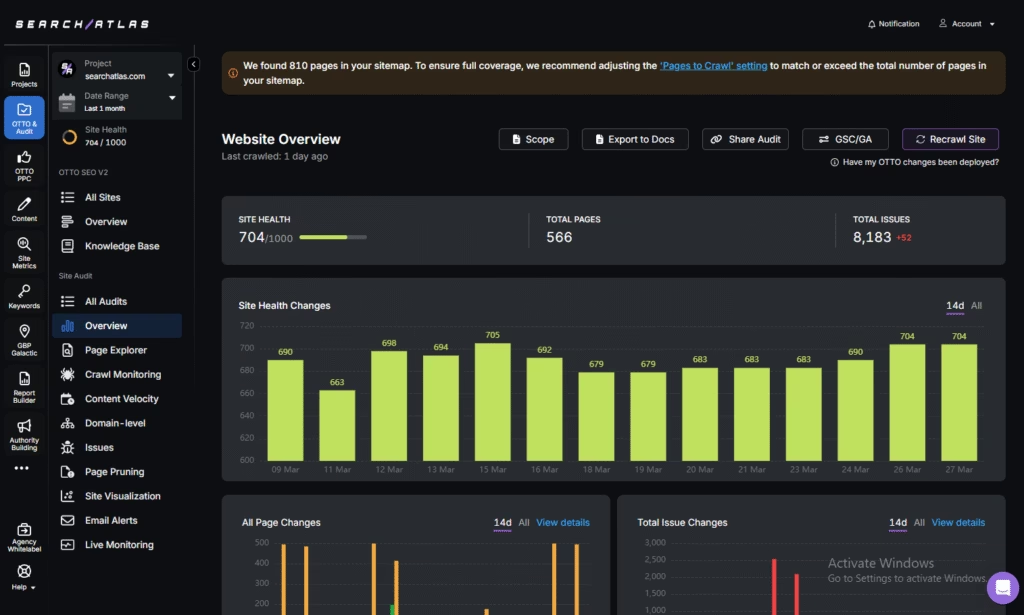
Search Atlas was built with SEO at its core. It connects technical optimization, content strategy, link building, and keyword research within one system. The platform pulls real performance data from Google Search Console (GSC), Google Business Profile(GBP), and Google Ads (GA4) for accurate visibility insights.
- Keyword Tools: Discover target keywords using live search volume, intent signals, competition levels, and trend patterns. Compare performance with competitors to uncover missed ranking opportunities.
- Content Optimization: Align website content with Google ranking factors using AI-driven recommendations. Optimize NLP terms, structure, factuality, and topical coverage for stronger relevance.
- Technical SEO: Detects and fix site-wide issues affecting performance, indexation, and user experience. Monitor real-time health scores and receive actionable fix recommendations for fast resolution.
- Link Building: Analyze backlink profiles, compare against competitors, and identify new acquisition opportunities. Access scalable outreach tools to secure authoritative links.
- Rank Tracking: Monitor keyword rankings with daily updates and historical trend analysis. Measure site strength using real GSC data for accurate visibility scoring.
Sharped SEM Paid Campaigns with Smarter SEO Data
Search Atlas boosts SEM performance by linking SEO insights with paid search execution, which helps teams run more cost-efficient campaigns. The platform supports PPC workflows with keyword research, landing page optimization, competitor analysis, and performance reporting.
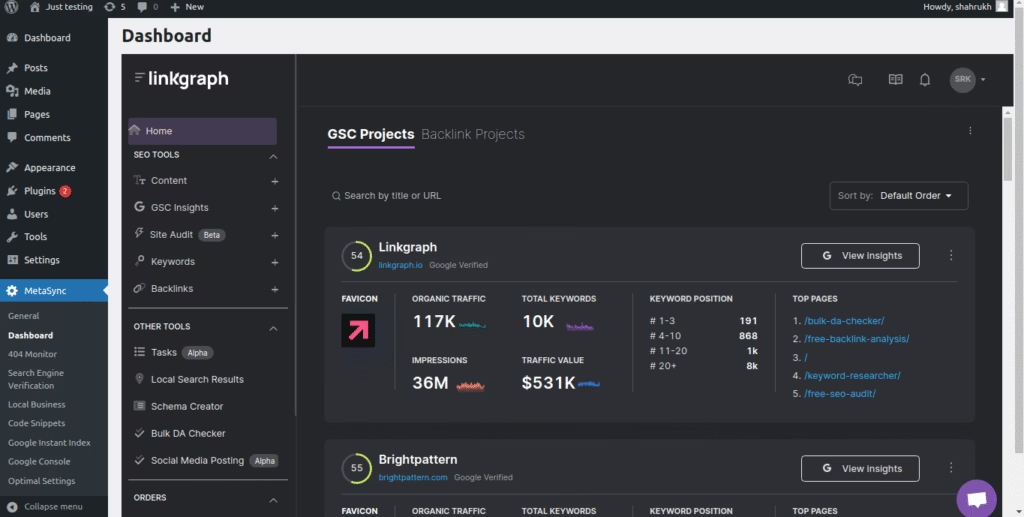
With WordPress and Shopify integrations, landing pages are updated faster which improves ad relevance and supports higher Quality Scores. Competitor tracking shows where rivals increase spend, adjust bids, or revise ad copy, offering clear direction for better positioning.
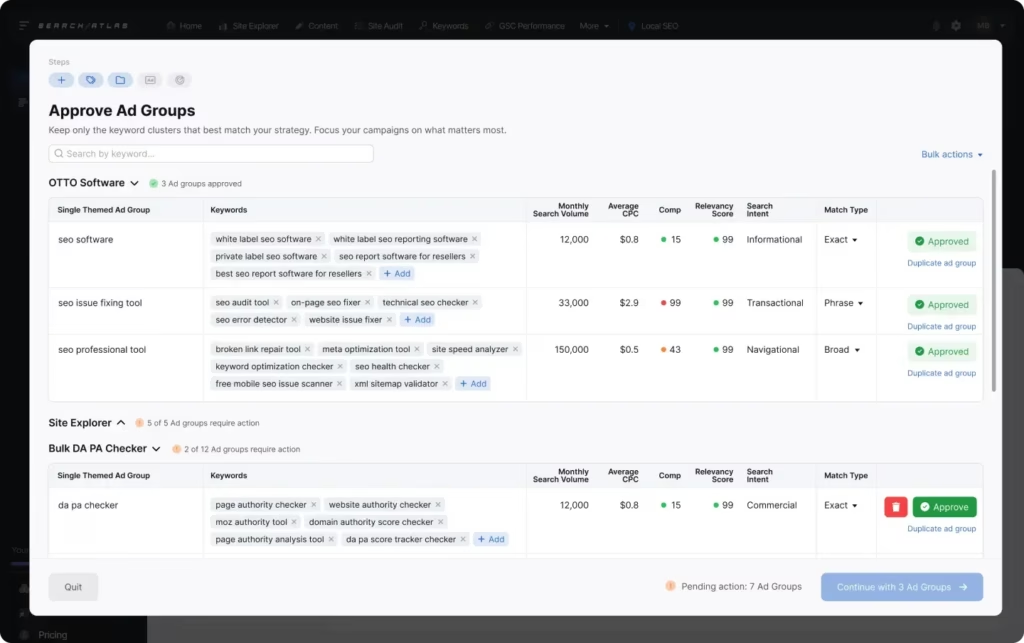
The OTTO Google Ads tool speeds up campaign setup by suggesting ad groups, keywords, and messaging that align with on-site content. Custom reporting then merges paid and organic data, providing a complete view of search visibility across both channels.
Content Built to Be Shared and Found for SMO Strategies
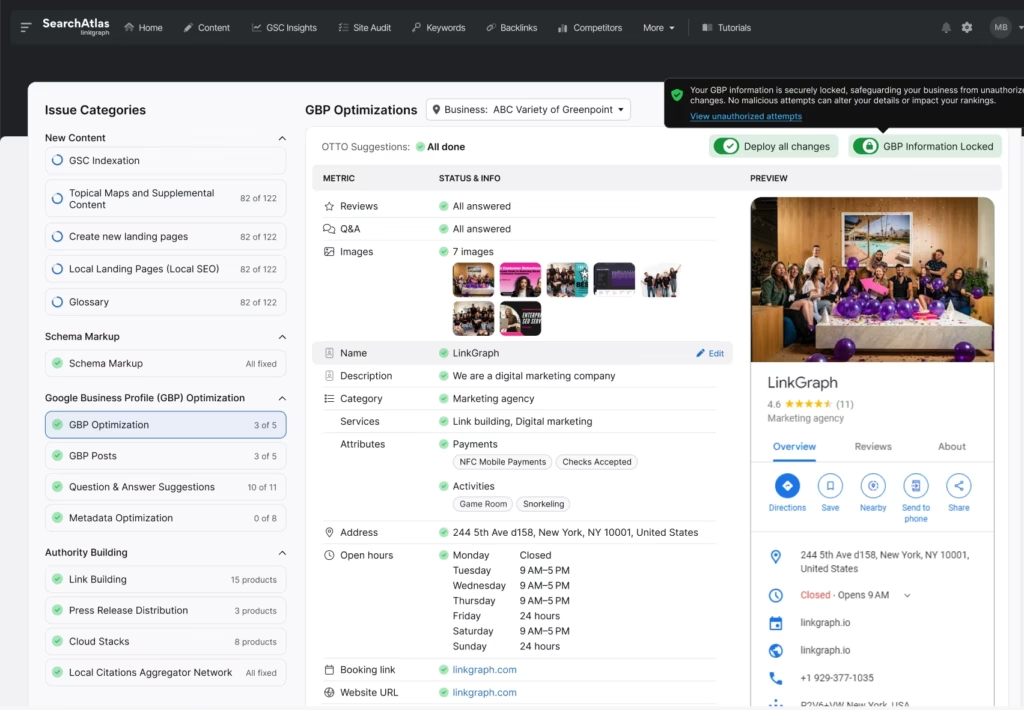
Search Atlas boosts SMO by linking search visibility to social engagement and aligning content with relevant conversations through topical and audience insights. The platform helps teams create social content that drives engagement, supports SEO goals, and tracks how social activity impacts overall visibility and brand reputation.
- Content Built for Sharing: Content Genius, Scholar, and Topical Map Generator help craft search-optimized, intent-driven content that encourages audience engagement and social sharing.
- Branded Search Monitoring: Rank Tracker and Domain Power measure how social campaigns affect branded search volume and increase overall organic visibility.
- Review Management: Review Responder helps local businesses manage GBP reviews, improving social proof and reinforcing brand trust.
- Content Strategy: Content Planner aligns social post topics with trending search queries, which make it easier to connect social content with audience interests
AI-Powered Integration Across All Channels
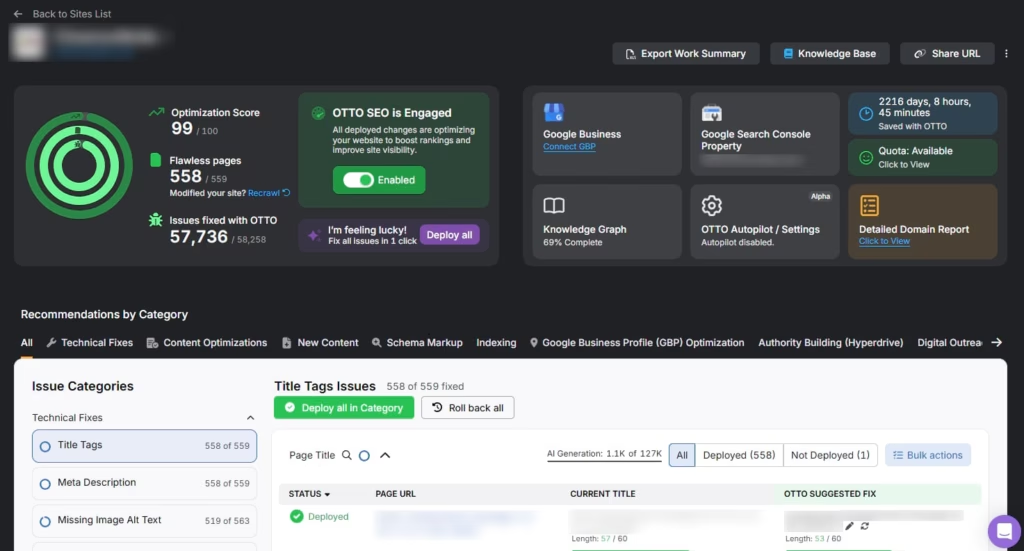
Search Atlas features OTTO SEO, an AI assistant that automates technical, content, and local SEO tasks. It adjusts title tags, meta descriptions, broken links, internal links, and manages GBP and content distribution.
OTTO connects with GSC and major CMS platforms like WordPress and Shopify to speed up and improve site updates. The assistant applies approved changes directly to websites and profiles, cutting manual work while keeping teams in control.
This automation aligns SEO, SEM, and SMO by streamlining updates, which improves site performance, and unifying visibility efforts within a single platform.
Search Atlas: One Platform to Power Your Entire Digital Presence
Understanding SEO, SEM, and SMO differences marks only the starting point. Applying that knowledge across channels requires connected tools and unified data.
Search Atlas combines SEO rankings, Google Ads performance, local visibility, and site analytics in one streamlined platform. Track backlink growth, measure paid traffic, and analyze social engagement through a single interface. 😎
Centralizes every part of your digital presence. Start your free trial today. No commitment, cancel anytime!




